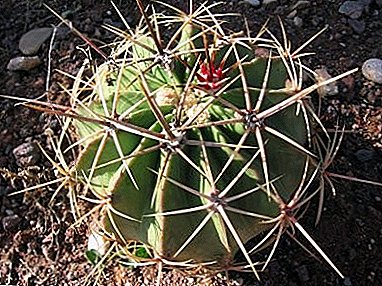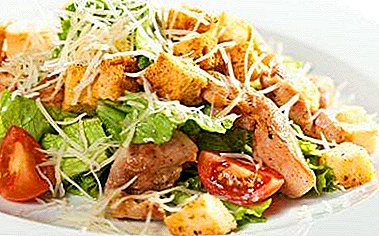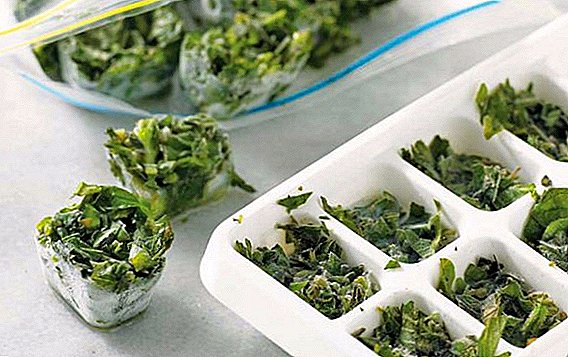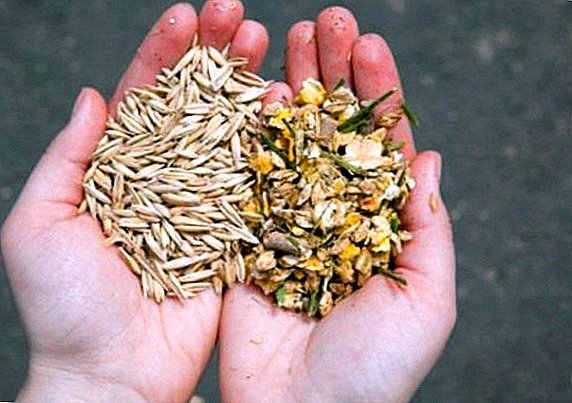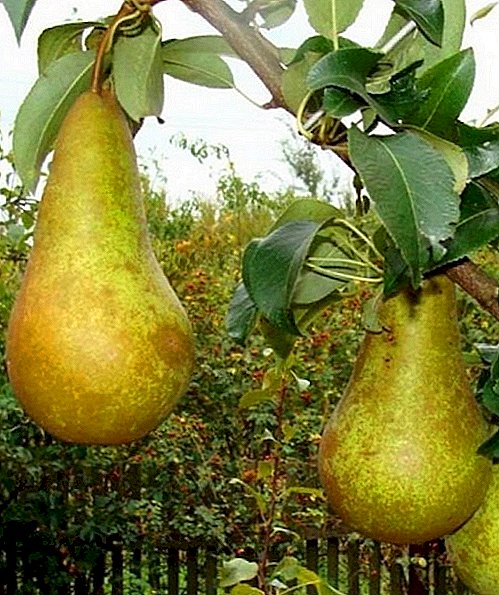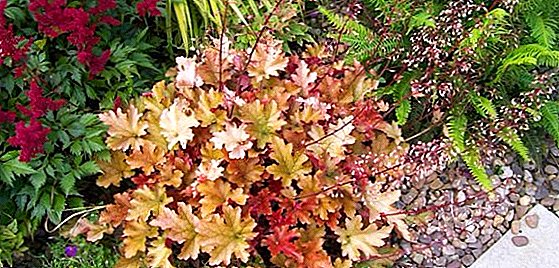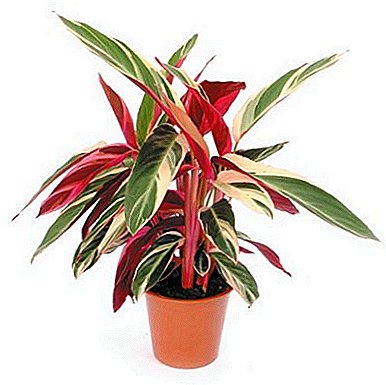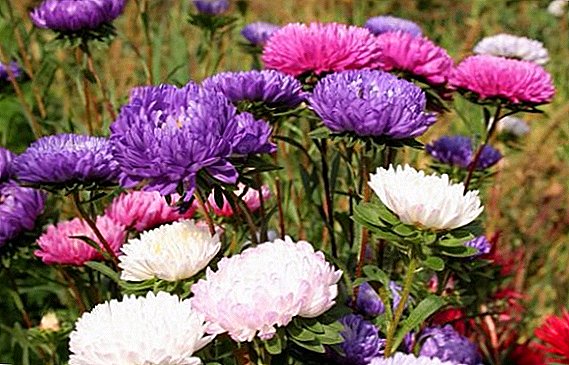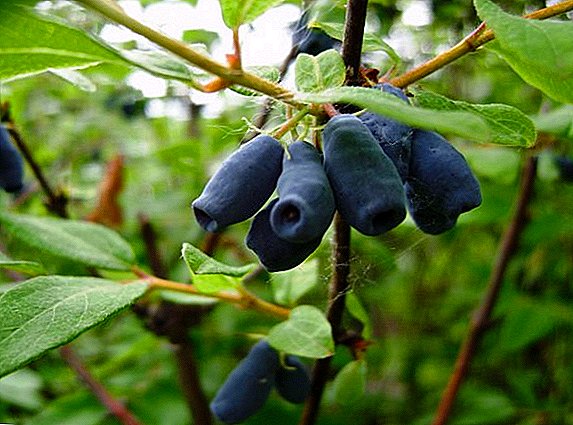 Honeysuckle is a plant that has many advantages. This delicious berries, a storehouse of vitamins, and decoration of yards and sites. It is for this reason that many want to have this culture in their homestead economy. The most common variety for private breeding is the edible honeysuckle Volkhov.
Honeysuckle is a plant that has many advantages. This delicious berries, a storehouse of vitamins, and decoration of yards and sites. It is for this reason that many want to have this culture in their homestead economy. The most common variety for private breeding is the edible honeysuckle Volkhov.
Breeding history
Honeysuckle Volkhov - variety bred by Leningrad breeders. Cultivated from seeds of the variety Pavlovskaya by agrotechnicians of Pavlovsk Experimental Plant Plant Industry VIR them. Vavilov in St. Petersburg. In 1999 entered into the register of selection achievements of Russia. The name comes from the river Volkhov, which flows in the Leningrad region.
Variety description
In the description of the honeysuckle variety Volkhov special attention is paid to the fact that this variety is not significantly different from others in appearance. It grows in the north-western regions of Russia, but can grow in more southern latitudes.
Did you know? In total, there are about 250 species of honeysuckle in nature.

Bushes
Honeysuckle Volkhov - This is a bush with an oval crown, has dense foliage. Height - 1.5-2 m. Shoots fleecy, straight. The leaves are wide, oval-shaped, dark green. A feature of the species is that the bush is self-productive. Next must grow other varieties of honeysuckle for pollination, only then will the berries appear. Amfora, Azure, Pavlovskaya will become the pollinators of Volkhov honeysuckle.
Important! Bees do not pollinate the plant. Pollinate - bumblebees and other insects.The culture is resistant to diseases and pests.
Berries
The fruits are bluish-gray, elongated in shape, with a blunt tip, dense flesh, about 2 cm long. The taste is sweet-sour, fragrant, with a taste of strawberries. Experts call the taste of Volkhov honeysuckle "dessert".
Almost do not crumble during ripening. It is harvested in mid-late June. Up to 3.5 kg of berries can be harvested from one bush. 
Specifications
This variety differs from other varieties in the amount of nutrients, yield, frost resistance, low flaking, etc. Berries contain about 9% sugars, about 2% acids and 56mg / 100g of vitamin C. In comparison with other berries, it contains the highest amount of magnesium. The yield is average, up to 3-3.5 kg per adult bush. The bush is frost-resistant, withstands temperatures up to -40 ° C in winter. Flowers, buds, green ovaries stand in the spring to -8 ° C.
Such varieties of honeysuckle - Nymph and Violet are also widespread among gardeners.
Honeysuckle Volkhov - a valuable culture and in terms of agronomic. It is suitable for planting in large areas. Berry can be harvested by a combine. Due to the dense skin, easily tolerates transportation. For enterprises processing berries - an excellent product for jams, jam, stewed fruit, juices and jelly. Dried berries are also prepared for sale.
Where to plant honeysuckle?
Honeysuckle - unpretentious plant. When planting seedlings need to choose a place protected from the wind. The soil should be fertile, moist, in a place that is well heated by the sun. But there is one feature: the lower branches should remain in the shade. The soil should be wet, but not wet.  The culture does not tolerate wetlands, places with close groundwater, sandy soil. Seedlings are best planted in the fall in a well prepared soil.
The culture does not tolerate wetlands, places with close groundwater, sandy soil. Seedlings are best planted in the fall in a well prepared soil.
Pit for planting varieties Volkhov, because it is high growing, placed 2-2.5 m apart. Do not forget that next to plant varieties for pollination. The pit should have good drainage, fertilizer (a mixture of 1 kg of ash, 50 g of superphosphate and a pair of compost buckets). You need to water the ground well in advance.
Very carefully with the roots, they need to be straightened, only then sprinkle with earth. Liberally pour. To mulch the ground so as not to evaporate moisture.
How to care for a grade
The plant is not picky, does not require special care. Watering, weeding, feeding and pruning - that's all you have to do in the care of culture. Pruning should be done in the autumn, in any case not in the spring.
Watering and soil care
Honeysuckle need to weed regularly from weeds, gently loosen the ground. Do not forget that the roots of the plant are located very close to the surface, therefore, care for the soil and watering is very important. Abundant watering is necessary only in hot weather and in the formation of berries, and so - moderately, as the soil dries.
Abundant watering is necessary only in hot weather and in the formation of berries, and so - moderately, as the soil dries.
Top dressing
In early spring, as soon as the snow melted, nitrogen fertilizers should be applied for each bush, after the appearance of the leaves - organic. During the flowering and the formation of berries can be poured ash. In the autumn it is necessary to make potash and phosphate fertilizers.
Pruning
Honeysuckle trimming is not recommended in the first two years after planting. This is stressful for the plant. Pruning should be done in the autumn, in any case not in the spring.
At the same time, first of all, remove the dried up and dried up branches. Inside the bush - branches thin out to avoid thickening. To rejuvenate the plant, it is enough to cut all the old branches, young shoots will grow quickly.
Pest and disease control
Volkhov's honeysuckle is resistant to diseases and pests, but there are always exceptions to the rules. Sometimes you will notice that the plant languishes. We must examine the bush. Most likely, the plant is affected by aphids or honeysuckle goldfish. Means to combat these pests are many.
If you noticed honeysuckle goldfish, you need to cut off the damaged shoots as low as possible and burn them. In order to have no doubts about the pests, it is necessary to carry out a preventive spraying once a year after harvesting.
Is it necessary to shelter for the winter?
Frost-resistant culture. But this concerns only mature plants. The first two or three years after planting the plant must be protected from the cold. For this fit the fallen leaves, spruce branches, humus. We insulate only the lower part of the plant after the onset of stable cold weather, from + 3 ° to -3 ° С.
If you decide not to warm the plant itself, then you can at least warm the root system with a layer of mulch at least 10-15 cm. Mature plants do not need warming. The best conditions for wintering are snowy winter. If the base of the bush does not fall asleep, manually fill it.
The advantages and disadvantages of the variety
Culture honeysuckle Volkhov has its advantages and disadvantages.
Did you know? There are only blue or black honeysuckle berries, and the red and orange fruits are poisonous.Advantages:
- unpretentious to the conditions;
- unpretentious care;
- low shedding;
- has beneficial properties;
- tasty berries;
- berries are suitable for harvesting for the winter;
- convenient in agrotechnical terms;
- berries and shoots are used in traditional medicine.

Important! Honeysuckle berries are used as a choleretic, anti-inflammatory, diuretic, as well as indispensable in the prevention of diseases of the cardiovascular system.Disadvantages:
- self-infertile;
- small fruits;
- low yield in the first 4-5 years.


